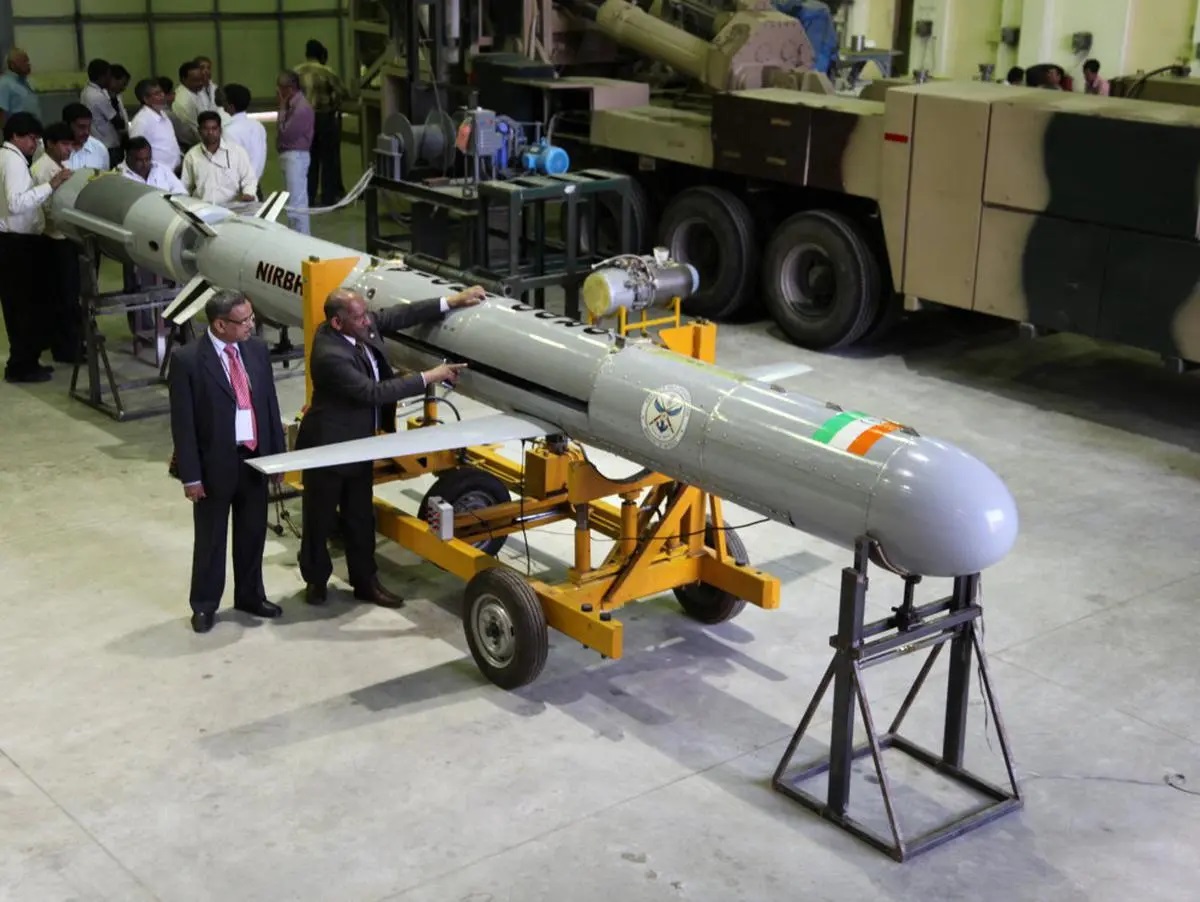The Indian Defence Research and Development Organisation’s (DRDO) Advanced Defence Establishment (ADE) continues to advance the Nirbhay (Fearless) missile program, expanding its capabilities beyond the successful land-based Long Range Land Attack Cruise Missile (LRLACM) variant and its precursor, the Indigenous Technology Cruise Missile (ITCM). The latest developments include a naval variant of the Nirbhay cruise missile, with testing for the anti-ship version anticipated within the next 12 to 18 months. ADE intends to achieve 100% indigenisation with the missile and its variants which will inherit these proven technologies. This schedule hinges on the successful integration of Universal Vertical Launch Module (UVLM) cells into a designated warship. The UVLM, fully designed and developed by BrahMos Aerospace and L&T, is presently installed in a plethora of frontline warships of the Indian Navy. The UVLM allows surface combatants to have a greater number of weapons ready for firing at any given time compared to older launching systems
Nirbhay, India’s long-range, all-weather, subsonic cruise missile, is powered initially by a solid rocket booster developed by the Advanced Systems Laboratory (ASL). After achieving the necessary velocity and altitude, the missile’s propulsion switches to a turbofan engine. The missile’s guidance system is a sophisticated combination of inertial navigation developed by the Research Centre Imarat (RCI), a radio altimeter, a ring laser gyroscope-based system, and a microelectromechanical system (MEMS) based inertial navigation system (INS) integrated with GPS/NavIC. With a length of 6 meters, a wingspan of 2.7 meters, and a weight of approximately 1,500 kg, Nirbhay can deliver a variety of warheads between 200 and 300 kg over a range of about 1,500 km. It boasts sea-skimming and loitering capabilities, enabling it to execute complex maneuvers around targets before re-engaging. The missile can fly at altitudes ranging from 50 meters to 4 km, making it adept at evading radar detection by flying low to the ground.

The DRDO has announced the completion of the Nirbhay cruise missile development project as of February 2023, following six successful developmental trials. The next phase, beginning in April 2024 under the ITCM program, will focus on the development of a ship-launched anti-ship variant. This variant will undergo integration with a frontline warship for further developmental trials, leveraging the DRDO’s Universal Vertical Launch Module (UVLM) cells for seamless naval platform integration. In addition to the naval variant, the ADE is also working on a powerful air-launched variant of Nirbhay with a range of 1,000 km. This variant will provide the Indian Air Force with enhanced long-range strike capabilities. DRDO is also developing a compact Submarine Launched Cruise Missile (SLCM), designed to be deployed from the torpedo tubes of submarines. This missile, a smaller version of the Nirbhay, has a stated range of 500 km, which may be extended to 800 km in future iterations. It will feature INS/GPS navigation, with a radio-frequency seeker for terminal guidance.
The successful development of these Nirbhay variants across land, sea, and air domains will significantly enhance India’s strategic deterrence capabilities. The land-based version reinforces long-range deterrence, while the ship-launched and anti-ship variants will offer the Indian Navy a strategic advantage in maritime operations. The air-launched variant will further extend the Indian Air Force’s reach, providing a versatile and potent long-range strike option. As these variants move closer to operational deployment, India’s cruise missile capabilities are set to expand, ensuring a robust and flexible response across multiple domains. Ministry of Defence (MoD) is considering a proposal from one of the service for the induction of Nirbhay and is at an advance stage of discussion. Once cleared, all the three services of Indian Armed Forces will have Nirbhay in their arsenal. Nirbhay, Pralay, Brahmos and Pinaka will become part of the Integrated Rocket Force (IRF), a separate entity from Strategic Forces Command (SFC).











